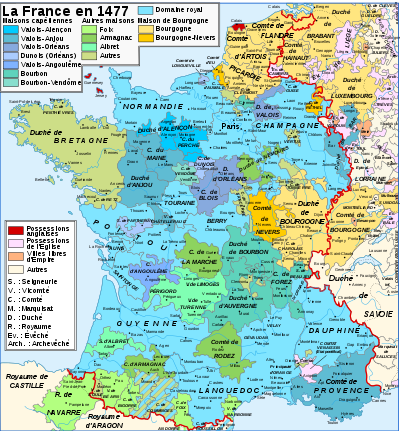#david potter
Photo










STAND ATLANTIC // PITY PARTY
93 notes
·
View notes
Photo





Stand Atlantic // switchblade
#bonnie fraser#stat#stand atlantic#stand atlantic lyrics#stand atlantic band#jonno panichi#Miki Rich#david potter#pop punk band#Pop punk#pop punk lyrics#switchblade#f.e.a.r.#fuck everything and run#emo lyrics#switchblade lyrics#artist: stand atlantic#stand Atlantic gif#lyrics#emo music#emo#pop rock#back on my fucking bullshit#new music
155 notes
·
View notes
Text




Stand Atlantic // doomsday
#stand atlantic#doomsday#f.e.a.r.#f.e.a.r. (fuck everything and run)#fuck everything and run#bonnie fraser#miki rich#jonno panichi#david potter#pop punk#lyrics#pop punk lyrics#lyric edit#punk#punk rock
46 notes
·
View notes
Text


jurassic park // june gloom
stand atlantic hot milk
#these song parallels just get better and better#especially when han and bon are dating#stand atlantic#hot milk#bonnie fraser#david potter#jonno panichi#miki rich#hannah mee#jim shaw#hardy deller#tom paton#pop punk#music#lyrics#lyric parallels
63 notes
·
View notes
Text
when theyre the same person


7 notes
·
View notes
Text
Expansion of the royal domain
The way in which the kingdom was ruled in its different provinces had always varied according to the degree that power had been permanently or temporarily devolved to apanage princes and great nobles or that representative assemblies continued to function. It is therefore axiomatic that there was no 'system of government' in the France of the Renaissance. The question is: was there a tendency for the kingdom to become more centralised? R. Bonney has wisely cautioned against the over-use in French history of the term 'centralisation', a term coined in 1794. The main distinction drawn in the early modern period, as Mousnier made clear, was that between the king's 'delegated' and 'retained' justice, the latter covering all the public affairs of the kingdom in which the crown was supreme and the former the private affairs of his subjects. No one would pretend, however, that a clear line of division was ever established between the two.
If we consider the case of the apanages and' great fiefs, for instance, the century from the reign of Louis XI is usually considered definitive in their suppression. In 1480, there were around 80 great fiefs. By 1530 around half of these still existed. The rest were in abeyance or held by members of the royal family. Within the royal house, the apanage of Orleans was reunited to the crown on the accession of Louis XII, although thereafter used periodically for the endowment of the king's younger son, permanently so after the reign of Louis XIV. The complex of territories held by the Bourbon and Bourbon-Montpensier families fell by the treason of the Constable in 1523. Burgundy (and temporarily Artois and Franche-Comté) were taken over in 1477. Among the great fiefs, the county of Comminges was united to the crown on the death of count Mathieu de Foix in 1453, the domains of the Armagnacs (such as the county of Rodez) were confiscated on the destruction of Jean V at Lectoure in 1473. They found their way by the reign of Francis I into the hands of the royal family, through the marriage of Jean V's sister to the count of Alençon. The last Alençon duke, Charles, married Francis I's sister, Marguerite of Angoulême, and Alençon's sister, Françoise, married duke Charles of Vendôme, grandfather of Henry IV. Brittany was acquired through war and marriage alliance in the 1490s, Provence and the domains of the house of Anjou after the death of king René and then of Charles d'Anjou in 1481. The archives of the Chambre des comptes of Anjou for the early 1480s give ample evidence of the king's determination to exploit his new acquisition as soon as possible.

It should not be assumed that the crown pursued a consistent determination to lay hands on all these territories and rule them directly. There was usually a more or less lengthy period of adjustment to a new status. Some apanages and territories taken over by Louis XI were absorbed into the general administration of the rest of the kingdom. This was clearly the case with Burgundy and Picardy-Artois in 1477, both of them in the area under the jurisdiction of the Parlement of Paris. Yet even here, Louis XI had to tread warily in winning over the support of the regional nobility and discontent was apt to break out until the end of the fifteenth century. On Louis's death, for instance, a rising occurred in Picardy at Bertrancourt near Doullens, with cries of 'there is no longer a king in France, long live Burgundy!' The absorption of Artois proved to be an impossible undertaking and had to be renounced in 1493.
Elsewhere, absorption of apanages that were distant from the centre of royal power left affairs locally much as they had been before. The little Pyreneen county of Comminges was governed much as it had been under its counts, with privileges confirmed by Charles VIII in 1496. Only with the work of royal commissioners in the tax-assessing process in the 1540s, the first time an outside power had actively intervened in the affairs of the local nobility, did this begin to change. Auvergne, an apanage raised to a duchy in 1360, was confirmed to the Bourbons in 1425 on condition that their whole domain became an apanage. The duchy was confiscated from the Constable in 1523 but transferred by the king to his mother in 1527 and only absorbed into the royal domain in 1531. Even after that, it formed the dower of Charles IX's queen and then part of the apanage of François d'Anjou, his brother. In the contiguous county of Forez, also confiscated in 1523, little local opposition emerged to the change of regime; although the local chambre des comptes was shortly suppressed, most local judicial officials, along with the entire administrative structure, were retained. Except for a few partisans of the Constable, it seems that there was no great upheaval. Louise de Bourbon, the Constable's sister and princess of La Roche-sur-Yon, demanded a share of the inheritance - Forez, Beaujolais and Dombes. Beaujolais and the principality of Dombes eventually went to Louise's son, Montpensier.
The county of Auvergne, enclaved in the duchy, was held by the duke of Albany in his wife's name, and was then inherited from the last of the La Tour d'Auvergne family by Catherine de Medici. Catherine brought it to the crown by her marriage with Henri II in 1533 but she continued to administer it as her own property. She left it to Charles IX's bastard, Charles de Valois, but her daughter Marguerite made good her claim to it in 1606 and it only entered the royal domain definitively when she willed it to Louis XIII.
After her marriage to Charles VIII in 1491, Brittany was administered as her own property by queen Anne, technically still duchess but in reality sharply circumscribed in her power, until her husband's death restored some of her freedom of action in 1498. Having already established friendly relations with Louis XII when he was still duke of Orleans, she was prepared to accept his offer of marriage after the annulment of his marriage to Louis Xl's daughter, Jeanne, had been agreed. The contract which accompanied the marriage in January 1499 tied the duchy to the crown provisionally on condition that it always passed to the second son of the marriage, while in the absence of issue the duchy was to revert to Anne's heirs on her own side. Anne was able to act rather more independently during her marriage to Louis XII though the conditions of the contract were not observed. On her death Brittany was inherited by her elder daughter Claude, wife of Francis I, who transmitted her rights to her son the dauphin. The queen had, however, transferred the government of the duchy to her husband in 1515 and he continued to rule it in the name of his son François on Claude's death, entitling acts as 'legitime administrateur et usufructuaire' of his son's property. When the dauphin's majority in 1532 brought the question of the imminent personal union of the duchy to the kingdom to the foreground, it was arranged for the Breton estates to 'request' full union with France but on terms which guaranteed Breton privileges and maintained the principle that the dauphin would be duke of Brittany. Only in 1536, on the death of the dauphin, was the union with the kingdom complete and no more dukes were crowned at Rennes. What had been done was the annulment of the Breton succession law, which included females, in favour of the French royal succession law. Late in 1539, it was decided that the new dauphin Henri would have the government of Brittany 'to govern as he pleases', though the documents were delayed by the king's illness. A 'Declaration' transferring Brittany to Henri was drawn up in 1540. In practice, the government of the duchy seems not to have been much changed.
The lands of the house of France-Anjou posed a complex problem. René of Anjou, titular king of Jerusalem, Sicily, Aragon and Naples, was count of Provence in his own right, of Maine and Anjou as apanagiste and Guise by succession. As early as 1478, Louis was scheming to ensure that king René, who had no surviving son, did not leave his territories of Anjou, Provence and Bar to his grandson, René II of Lorraine, warning the general of Languedoc that his region would be 'destroyed' if Provence fell into other hands. On the 'good' king's death in 1480, most of his domains passed to his cousin Charles IV d'Anjou, count of Maine, who died childless in 1481, when Maine and Anjou reverted to the crown, thereafter to be granted out to members of the royal family such as Louise of Savoy. At the same time Provence was acquired by Louis XI by Charles IV's will and the county of Guise was disputed between the houses of Armagnac-Nemours, Lorraine (heirs of René I of Anjou and successors as titular kings of Jerusalem and Sicily) and Pierre de Rohan, marshal de Gié. From 1481, however, the king ruled in Provence as 'count of Provence and Forcalquier'. The lord of Soliès, Palamède de Forbin, who had persuaded Charles d'Anjou to leave the county to the king, was rewarded with the post of governor. The major change came in 1535 with the edicts of Joinville and Is-sur-Tille on the government of Provence, limiting the scope of the old institutions of the Estates and the Sénéchal and increasing that of the Parlement of Aix in justice and of the royal governor in administration. Curiously, Francis I was reported as having said that he felt an obligation to 'ceux de Guise', the house of Lorraine in France, since Louis XI had despoiled them of their inheritance of Provence and Anjou.
The major surviving complex of apanage lands by the middle of the sixteenth century was that held by Antoine de Bourbon, now first prince of the blood and next in line to the throne after the immediate royal family, and his wife Jeanne d'Albret. These involved a group of territories held by different tenures. The Albret inheritance brought the titular kingship of Navarre with a small fragment of the ancient kingdom of Navarre north of the Pyrénées that was held in sovereignty. In the counties of Foix, Albret and Béarn, the family held effective sway under only the most distant royal sovereignty, though Louis XI saw fit to pose as the protector of the young François-Phébus in 1472. In 1476, he sought to revise local tariffs against Albret interests and in 1480 attempts to levy a taille for the gendarmerie there stirred up a rebellion. In western France, the duchy of Vendôme, erected as late as 1515 to detach it from dependence on the duchy of Anjou, was held as an apanage under rather closer royal supervision. In the north, the complex of lands administered from La Fère-sur-Oise and centring the county of Marle was held directly of the king or of the Habsburg ruler of the Netherlands, rendering the family, to some, unreliable. Practical power stemmed from the holding of the governorships of Picardy and of Guyenne by the Bourbons and Henri d'Albret.
Other independent territories persisted, such as the vicomté of Turenne, where the vicomte (of the La Tour d'Auvergne family) ruled with regalian rights until the eighteenth century, could raise taxes, coin money, make war and render justice as a limited monarch in conjunction with very active local estates.
David Potter - A History of France, 1460-1560- The Emergence of a Nation State
#xv#xvi#david potter#a history of france 1460 1560: the emergence of a nation state#louis xi#louis xii#charles iii de bourbon#mathieu de foix#jean v d'armagnac#françois i#charles iv d'alençon#marguerite d'angoulême#rené d'anjou#charles viii#charles ix#élisabeth d'autriche#louise de bourbon#gilbert de montpensier#catherine de medici#house of la tour d'auvergne#charles de valois#louis xiii#anne de bretagne#jeanne de france#claude de france#charles iv d'anjou#louise de savoie#house of guise#capetian house of bourbon#antoine de bourbon
4 notes
·
View notes
Text

Stand Atlantic in Montreal, Quebec - 06/14/2022
#my pics are bad sorry#stand atlantic#bonnie fraser#jonno panichi#david potter#miki rich#also there is scott mclaughlin in the background if you squint#from with confidence#pop punk#photo dump from yesterday
11 notes
·
View notes
Text
YUH YUH
#sorry incoming concert spam#stand atlantic#coffee at midnight#f.e.a.r.#skinny dipping#pink elephant#bonnie fraser#jonno panichi#miki rich#David potter#Portland Oregon
3 notes
·
View notes
Text
my roman empire is that the actors for sirius and remus thought they were portraying a couple.
#my roman empire#roman empire#marauders#marauders era#the marauders#the marauders era#marauders fandom#harry potter fandom#harry potter#hp fandom#3rd book#prisoner of azkaban#incorrect marauders quotes#remus loves sirius#remus lupin#sirius being sirius#sirius black#remus x sirius#sirius orion black#black brothers#cute wolfstar#wolfstar#wolfstar angst#gary oldman#david thewlis#wolfstar is canon#dead wizards from the 70s#dead gay wizards
1K notes
·
View notes
Text
Rip remus lupin, you would have loved being a 64 year old grumpy man that wore the ugliest sweaters and peeled oranges perfectly.
#remus lupin#marauders#wolfstar#sirius black#happy birthday#remuslupinoldmanera#HE DIED SO YOUNG#older daddy#1960s#david bowie#harry potter#im dying
1K notes
·
View notes
Text

Ah, yes. Finally, the full version
[By tardis_time_with_13 on Instagram]
#the fact that all mentioned fandoms equal one person#in my case at least#david tennant#doctor who#tenth doctor#broadchurch#harry potter#barty crouch jr#shakespeare#marvel’s jessica jones#jessica jones#killgrave#good omens#crowley#ducktales#uncle scrooge#michael sheen#georgia tennant
2K notes
·
View notes
Photo










STAND ATLANTIC // HAIR OUT
86 notes
·
View notes
Text



dumb (Tom The Mail Man) // Stand Atlantic
#bonnie fraser#stand atlantic#jonno panichi#david potter#lyrics#f.e.a.r.#fuck everything and run#tom the mail man#stat#pop punk lyrics#pop punk band#pop punk#pop rock#emo music#emo lyrics#emo#newmusic#new album#song: dumb#artist: stand atlantic
43 notes
·
View notes
Text


Stand Atlantic // bloodclot
#stand atlantic#stat#stand at#bloodclot#f.e.a.r#f.e.a.r (fuck everything and run)#fuck everything and run#lyrics#pop punk lyrics#pop punk#lyric edit#bonnie fraser#miki rich#jonno panichi#david potter
143 notes
·
View notes
Text


lost my cool // wavelength
- stand atlantic
#i fuckin love song parallels like this#especially since these are two of my biggest comfort songs#lost my cool#wavelength#stand atlantic#stat#bonnie fraser#david potter#jonno panichi#miki rich#alternative#alternative rock#pop punk#rock#music#molotov [ok]#song parallels#lyric parallels#lyric edit#my edits
41 notes
·
View notes
Text










It really just baffles me how they were all played by the same person
#i mean he's a chameleon#most of those characters are fruity#and then there's harry the vicar and alec hardy khkhkhkh#ok but even alec is still a bit fruity sometimes#most of them are stoopid#i love them so much#david tennant#broadchurch#good omens#inside man#harry potter#bad samaritan#doctor who#fright night
1K notes
·
View notes